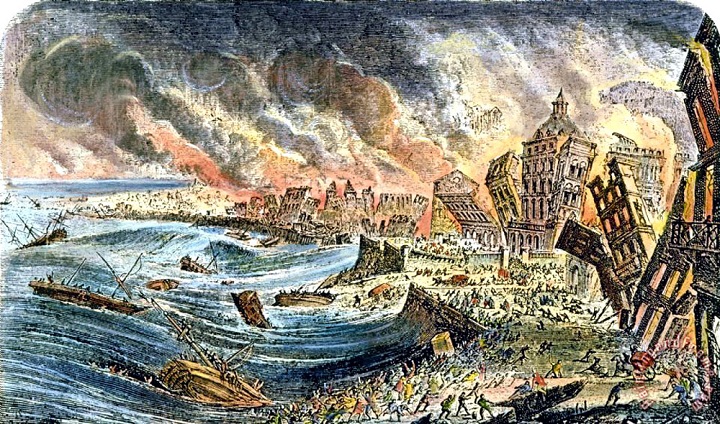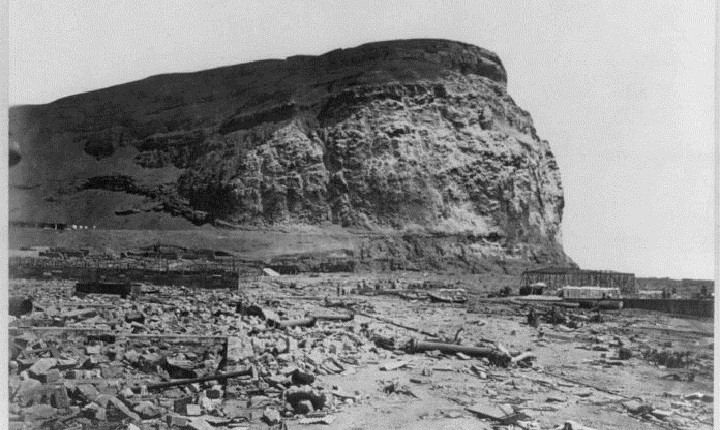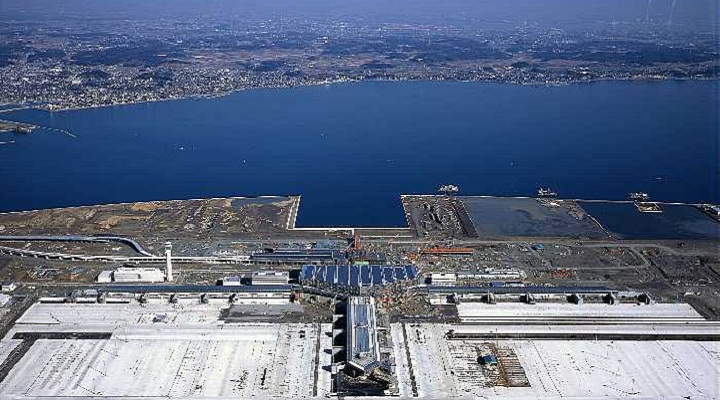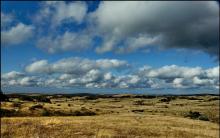Tsunamis produced by earthquakes and volcanic eruptions are considered the most dangerous natural phenomena on Earth. In the last two decades alone, giant waves and tremors have combined to kill 55% of the 1.35 million people killed in natural disasters. Throughout its history, humanity has experienced many similar disasters, but in this article we bring to your attention the ten most destructive and deadly tsunamis ever recorded on our planet.
1. Sumatra (Indonesia), December 24, 2004
At the end of December 2004, off the coast of Sumatra, at a depth of about 30 km, a powerful earthquake with a magnitude of 9.1 occurred, caused by a vertical displacement of the seabed. As a result of the seismic event, a large wave was formed about 1,300 km wide, which reached a height of 15 meters as it approached the shore. A giant wall of water hit the shores of Indonesia, Thailand, India, Sri Lanka and several other countries, leaving behind between 225,000 and 300,000 dead. Many people were swept into the ocean, so the exact numbers of deaths are unlikely to ever be known. According to general estimates, the damage from the disaster amounted to about 10 billion US dollars.
2. Pacific Northwest Coast (Japan), March 11, 2011

In 2011, on March 11, a huge 10-meter wave, moving at a speed of 800 km/h, swept the east coast of Japan and led to the death or disappearance of over 18,000 people. The reason for its appearance was an earthquake of magnitude 9.0 that occurred at a depth of 32 km east of the island of Honshu. About 452,000 Japanese survivors were moved to temporary shelters. Many still live there today. An earthquake and tsunami caused an accident at the Fukushima nuclear power plant, after which significant radioactive releases occurred. Total damage amounted to $235 billion.
3. Lisbon (Portugal), November 1, 1755

An earthquake of magnitude 8.5 that occurred in the Atlantic caused a series of three huge waves that covered the Portuguese capital and a number of coastal cities in Portugal, Spain and Morocco. In some places the tsunami height reached 30 meters. The waves crossed the Atlantic Ocean and reached Barbados, where their height was 1.5 meters. Overall, the quake and subsequent tsunami killed about 60,000 people.
4. Krakatoa (Indonesia), August 27, 1883

The volcanic eruption in 1883 was one of the largest in modern human history. The giant's explosions were so powerful that they caused high waves that flooded the surrounding islands. After the volcano split and fell into the ocean, the largest tsunami was generated, 36 meters high, destroying over 160 villages on the islands of Sumatra and Java. Of the more than 36,000 people killed in the eruption, over 90% of people were victims of the tsunami.
5. Nankaido (Japan), September 20, 1498

According to general estimates, the earthquake that shook the islands in southeastern Japan had a magnitude of at least 8.4. The seismic event led to a tsunami that hit the Japanese provinces of Kii, Awaji and the coast of Shikoku island. The waves were strong enough to destroy the isthmus that previously separated Lake Hamana from the ocean. Flooding was observed throughout the historical Nankaido region, and the death toll was estimated to have reached between 26,000 and 31,000 people.
6. Nankaido (Japan), October 28, 1707

Another devastating tsunami, caused by a magnitude 8.4 earthquake, hit Nankaido, Japan in 1707. The wave height was 25 meters. Settlements on the coast of Kyushu, Shikoku and Honshu were damaged, and the large Japanese city of Osaka was also damaged. The disaster resulted in the destruction of more than 30,000 homes and the death of approximately 30,000 people. It is estimated that about a dozen tsunamis hit Japan in just 1 hour that day, some of them traveling several kilometers deep into the islands.
7. Sanriku (Japan), June 15, 1896

The tsunami in the northeastern part of the island of Honshu was caused by an earthquake of magnitude 7.2, caused by a shift of lithospheric plates in the area of the Japan Trench. After the earthquake, two waves rushed into the Sanriku region one after another, rising to a height of up to 38 meters. Since the arrival of the water coincided with the tide, the damage from the disaster was incredibly high. More than 22,00 people were killed and over 9,000 buildings were destroyed. The tsunamis also reached the Hawaiian Islands, but here their height was much lower - about 9 meters.
8. Northern Chile, August 13, 1868

The tsunami in northern Chile (at that time off the coast of Arica in Peru) was caused by a series of two large earthquakes with a magnitude of 8.5. Waves up to 21 meters high flooded the entire Asia-Pacific region and reached Sydney, Australia. The waters washed over the shores for 2 or 3 days, ultimately causing 25,000 deaths and $300 million in damage.
9. Ryukyu (Japan), April 24, 1771

Boulders thrown up by the tsunami
A magnitude 7.4 earthquake caused a tsunami that flooded many Japanese islands. The hardest hit areas were Ishigaki and Miyako, where wave heights ranged from 11 to 15 meters. The disaster resulted in the destruction of 3,137 houses and the death of about 12,000 people.
10. Ise Bay (Japan), January 18, 1586

Ise Bay today
The earthquake that caused the tsunami in Ise Bay on the island of Honshu received a magnitude of 8.2. Waves rose to a height of 6 meters, causing damage to settlements on the coast. The city of Nagahama suffered not only from water, but also from fires that broke out after the earthquake and destroyed half of the buildings. The Gulf tsunami killed more than 8,000 people.











The most beautiful motorcycles in the world
Which sea is the cleanest in the world?
Top 10 Most Expensive Furs
The largest and most luxurious casinos in the world
Knightly orders of Europe XI - XIII centuries